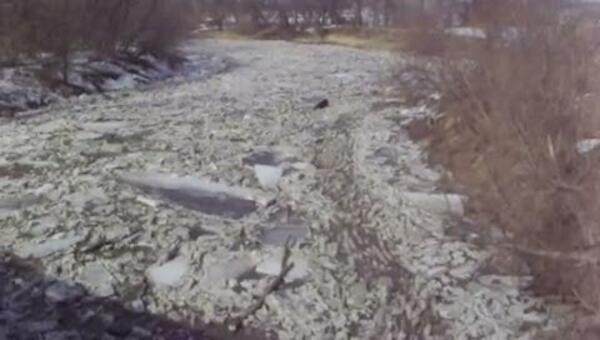Description available soon

An official website of the United States government
Here's how you know
Official websites use .gov
A .gov website belongs to an official government organization in the United States.
Secure .gov websites use HTTPS
A lock () or https:// means you’ve safely connected to the .gov website. Share sensitive information only on official, secure websites.
The USGS is a science organization that provides impartial information on the health of our ecosystems and environment, the natural hazards that threaten us, the natural resources we rely on, the impacts of climate and land-use change, and the core science systems that help us provide timely, relevant, and useable information.
 Earthquake Awareness and Seismic Retrofitting in the Central U.S.
Earthquake Awareness and Seismic Retrofitting in the Central U.S.
Description available soon
Description available soon
 Information Sources for the 1811-1812 New Madrid Earthquakes
Information Sources for the 1811-1812 New Madrid Earthquakes
Description available soon
Description available soon
This video captures the breakup of ice cover on the Skunk River at Augusta, Iowa, on February 17, 2011, at approximately 3:00 pm CST. The river stage at the time was 14.50 feet (elevation 535.74 feet NGVD29). A preliminary estimate of the discharge at the time of the ice breakup is 9,500 cubic feet per second.
This video captures the breakup of ice cover on the Skunk River at Augusta, Iowa, on February 17, 2011, at approximately 3:00 pm CST. The river stage at the time was 14.50 feet (elevation 535.74 feet NGVD29). A preliminary estimate of the discharge at the time of the ice breakup is 9,500 cubic feet per second.
Another series of collapses occurred within Kīlauea's summit vent on the floor of Halema‘uma‘u before sunrise on February 15. This movie shows the first of the rockfalls and the resulting small explosive event.
Another series of collapses occurred within Kīlauea's summit vent on the floor of Halema‘uma‘u before sunrise on February 15. This movie shows the first of the rockfalls and the resulting small explosive event.
 Ice Jam on the Little Nemaha River at Auburn, Nebraska
Ice Jam on the Little Nemaha River at Auburn, Nebraska
A 1-minute video shows ice flows on the Little Nemaha River at the streamgaging station at Auburn, Nebraska.
A 1-minute video shows ice flows on the Little Nemaha River at the streamgaging station at Auburn, Nebraska.
 Earthquake Features - Historic Evidence in Arkansas
Earthquake Features - Historic Evidence in Arkansas
Description available soon
Description available soon
 Effects and Accounts of the 1811-1812 New Madrid Earthquakes
Effects and Accounts of the 1811-1812 New Madrid Earthquakes
Description available soon
Description available soon
Description available soon
Movie of lava flows in Pu‘u ‘Ō‘ō crater from February 6-8. Lava has been erupting sporadically from three vents within Pu‘u ‘Ō‘ō crater-a cone on the west side of the crater floor (foreground to left), a cone on the northeast side (center frame), and from an opening on the east crater wall (background).
Movie of lava flows in Pu‘u ‘Ō‘ō crater from February 6-8. Lava has been erupting sporadically from three vents within Pu‘u ‘Ō‘ō crater-a cone on the west side of the crater floor (foreground to left), a cone on the northeast side (center frame), and from an opening on the east crater wall (background).
Description available soon
Description available soon
 PubTalk 1/2011 — Capture and Geologic Sequestration of Carbon Dioxide
PubTalk 1/2011 — Capture and Geologic Sequestration of Carbon Dioxide
Is Sequestration Necessary? Can We Do It at an Acceptable Total Cost?
By Yousif Kharaka, USGS National Research Program
Is Sequestration Necessary? Can We Do It at an Acceptable Total Cost?
By Yousif Kharaka, USGS National Research Program
Movie of the January 21 collapse and dusty plume captured by a Webcam located in the observation tower at the Hawaiian Volcano Observatory.
Movie of the January 21 collapse and dusty plume captured by a Webcam located in the observation tower at the Hawaiian Volcano Observatory.
America has questions about climate change, and the USGS has real answers. Climate Connections is a USGS video series in which some of the world's leading scientists answer climate change questions gathered across the Nation.
America has questions about climate change, and the USGS has real answers. Climate Connections is a USGS video series in which some of the world's leading scientists answer climate change questions gathered across the Nation.
America has questions about climate change, and the USGS has real answers. Climate Connections is a USGS video series in which some of the world's leading scientists answer climate change questions gathered across the Nation.
America has questions about climate change, and the USGS has real answers. Climate Connections is a USGS video series in which some of the world's leading scientists answer climate change questions gathered across the Nation.
Movie of the January 17 collapse and explosive eruption captured by a Webcam located in the observation tower at the Hawaiian Volcano Observatory.
Movie of the January 17 collapse and explosive eruption captured by a Webcam located in the observation tower at the Hawaiian Volcano Observatory.
Movie of the January 17 collapse and explosive eruption captured by a Webcam located on the rim of Halema‘uma‘u directly above the erupting vent.
Movie of the January 17 collapse and explosive eruption captured by a Webcam located on the rim of Halema‘uma‘u directly above the erupting vent.



